The Physics Of Ice Screws




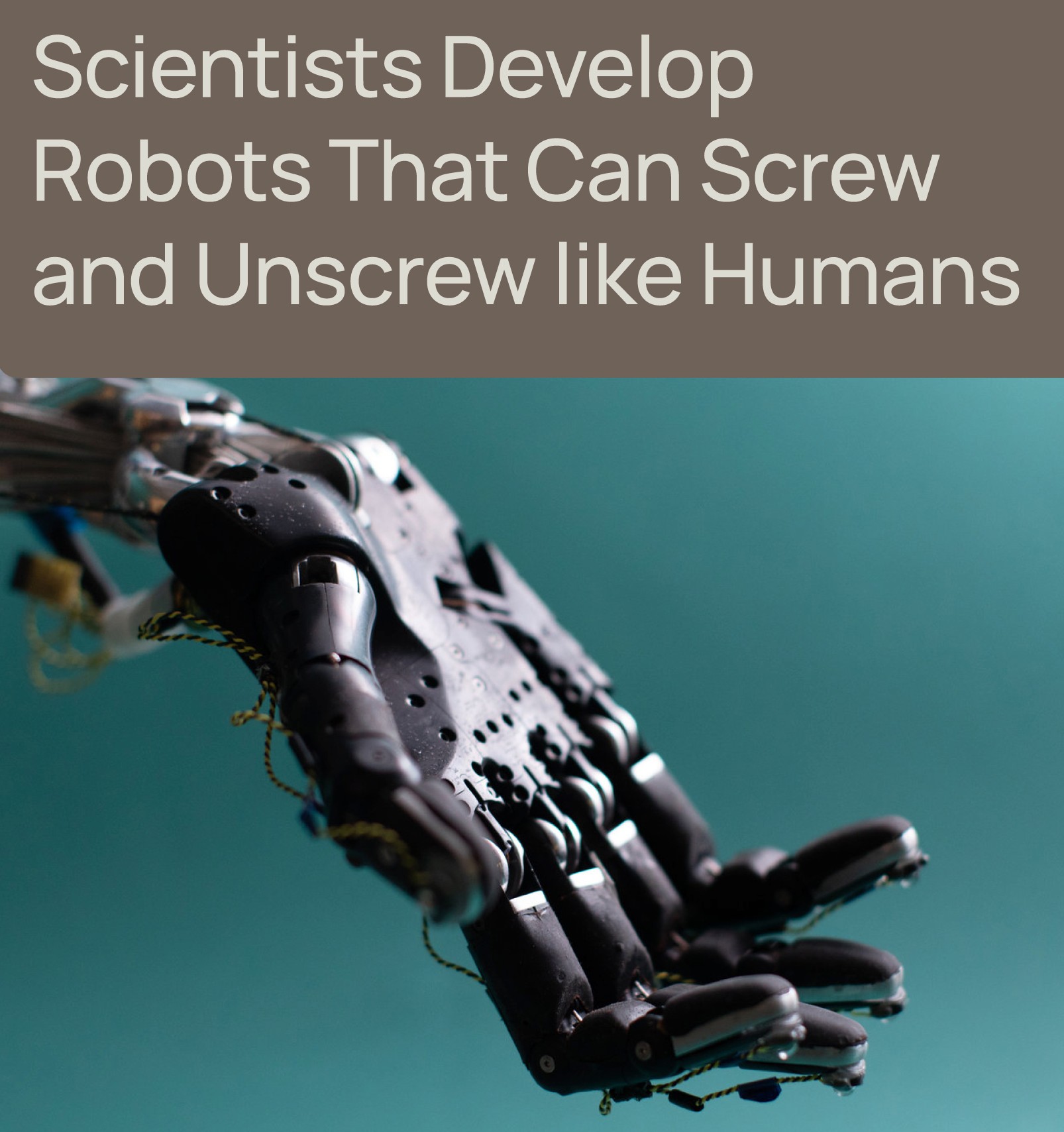


There are many types of fasteners available for use with 🗿 concrete. The most common fasteners include concrete nails, concrete screws, and concrete anchors. Each type of fastener has its own set of advantages and disadvantages.
Concrete nails are the most common type of fastener used for light-duty applications. They are easy to install and remove, and they are not affected by vibration or 😱 shock. However, concrete nails are not as strong as other types of fasteners and can come loose over time.
Concrete screws are stronger than nails and are ideal for 🏋️♂️ heavy-duty applications. They are also less likely to come loose than nails, but they can be more difficult to install and remove.
Concrete ⚓️ anchors are the strongest type of fastener and are perfect for applications where the highest level of strength is required. They are also the most challenging to install and remove.
When choosing fasteners for your concrete project, it is important to consider the type of application and the level of strength required. For most applications, concrete 🔨 nails or screws will suffice. However, for applications where the highest level of strength is required, concrete anchors are the best option.
If you’re not sure which type of fastener is right for your project, our team of experts can help. Contact us today to get started.
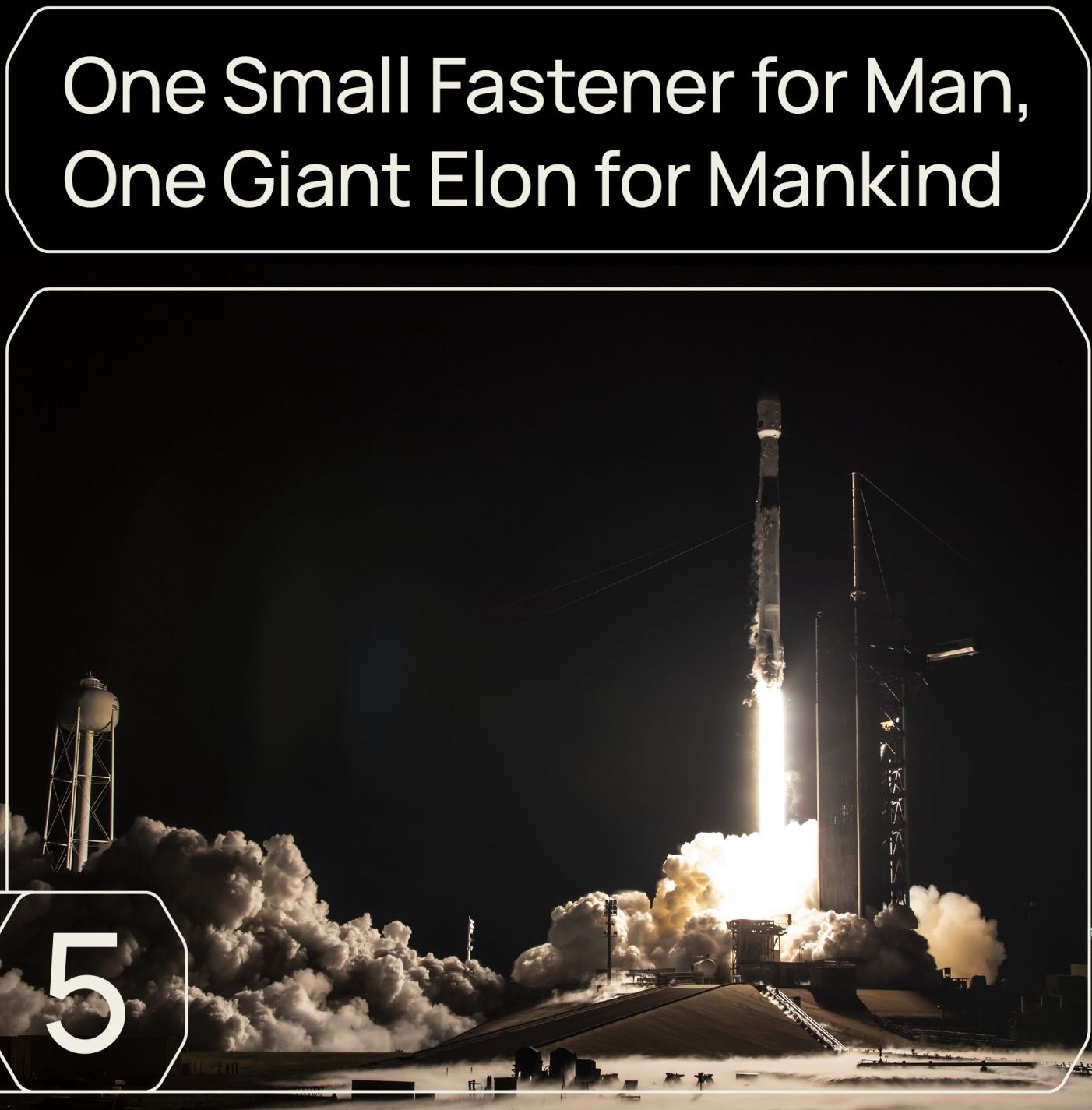
Pyrotechnic 🧨 fasteners (also called an explosive bolt, or pyro) are commonly used as a space rocket detachment system. They are used to quickly and efficiently release a rocket from its launch vehicle, allowing it to begin its ascent into 🪐 space.
Pyrotechnic bolts are typically made of a high-strength material, such as steel or titanium, and are designed to withstand the high temperatures and pressures of a space launch. They are also usually equipped with a ⏲ timer or other mechanism to ensure that they detonate at the correct time.
Space rockets are subject to extreme forces during launch, so it is important that the pyrotechnic bolts detonate correctly and at the right time in order to ensure a safe and successful launch. If the bolts do not detonate 💥 correctly, the rocket could be damaged or even destroyed.
Pyrotechnic bolts are an essential part of the space launch process and have been used successfully for many years. But Elon Musk’s 🧑🚀 SpaceX has a different take on them by using pneumatic detaching mechanism for their Falcon 9 rocket. This technology is more advanced, reliable and safe as compared to the pyroteumatic bolts. Pneumatic system uses compressed gas to generate the force required for detachment. The gas is directed through a series of valves and chambers to create the required amount of ☄️ force. The system is also equipped with a safety valve to release the gas in case of an emergency.
Pneumatic system has many advantages over pyrotechnic system. It is more reliable as there is no possibility of accidental detonation. It is also safer as the gas is released slowly and can be directed away from the rocket. Pneumatic system is also more precise and can be used to detach the rocket at a specific time.
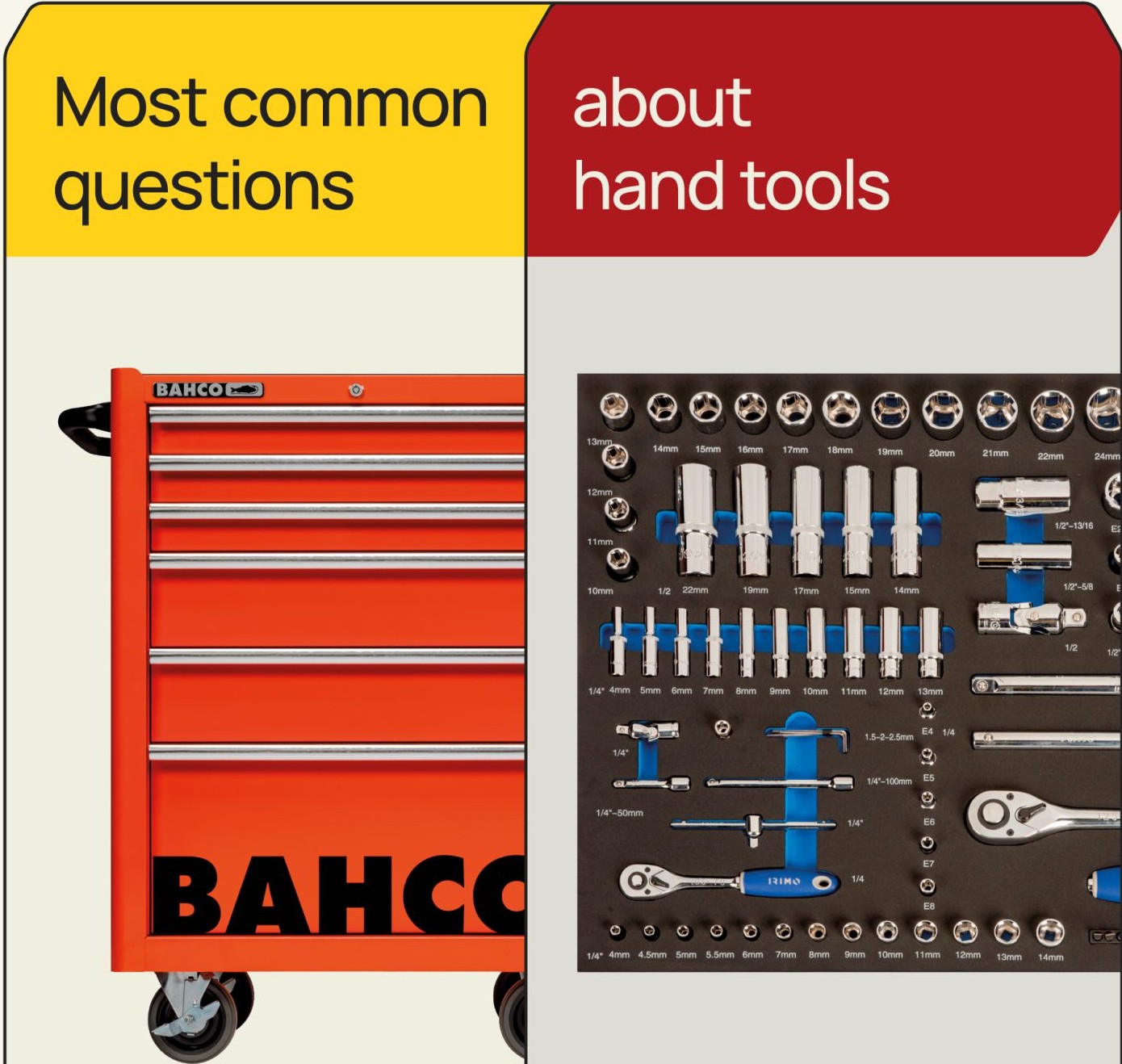
When it comes to hand tools, there are a few questions that seem to pop up more frequently than others. Below are the five most common questions, along with some helpful answers.
📆 How do I know when a tool needs to be replaced?
In general, you should replace a tool when it starts to show signs of wear and tear. For instance, if the blades on your scissors are starting to get dull or if the handle on your hammer is starting to loosen, it’s time to get new tools.
🧼 How do I clean my hand tools?
Cleaning your hand tools is important to keep them in good condition and prevent rust. The best way to clean them is to use a mild soap and water solution. You can also use a wire brush to remove any dirt or debris.
🗃 How do I store my hand tools?
Storing your hand tools properly is important to prevent them from becoming damaged. The best way to store them is in a dry, cool place. A toolbox or cabinet is also a good option to keep them organized and protected.
🥇 What are the most essential hand tools?
The most essential hand tools depend on the project you’re working on. However, some essential hand tools include a hammer, screwdriver, tape measure, and level.
📚 What are the best hand tools for a beginner?
If you’re just getting started, the best hand tools to have are a basic set of screwdrivers, a hammer, and a set of pliers. These will help you tackle most projects.
Learning about hand tools and how to use them is a never-ending process. However, at Tsamouris we can help get started on the right foot with our high-quality tools from Swedish Bahco and Spanish Irimo. Check them at tsamourisfast.com.
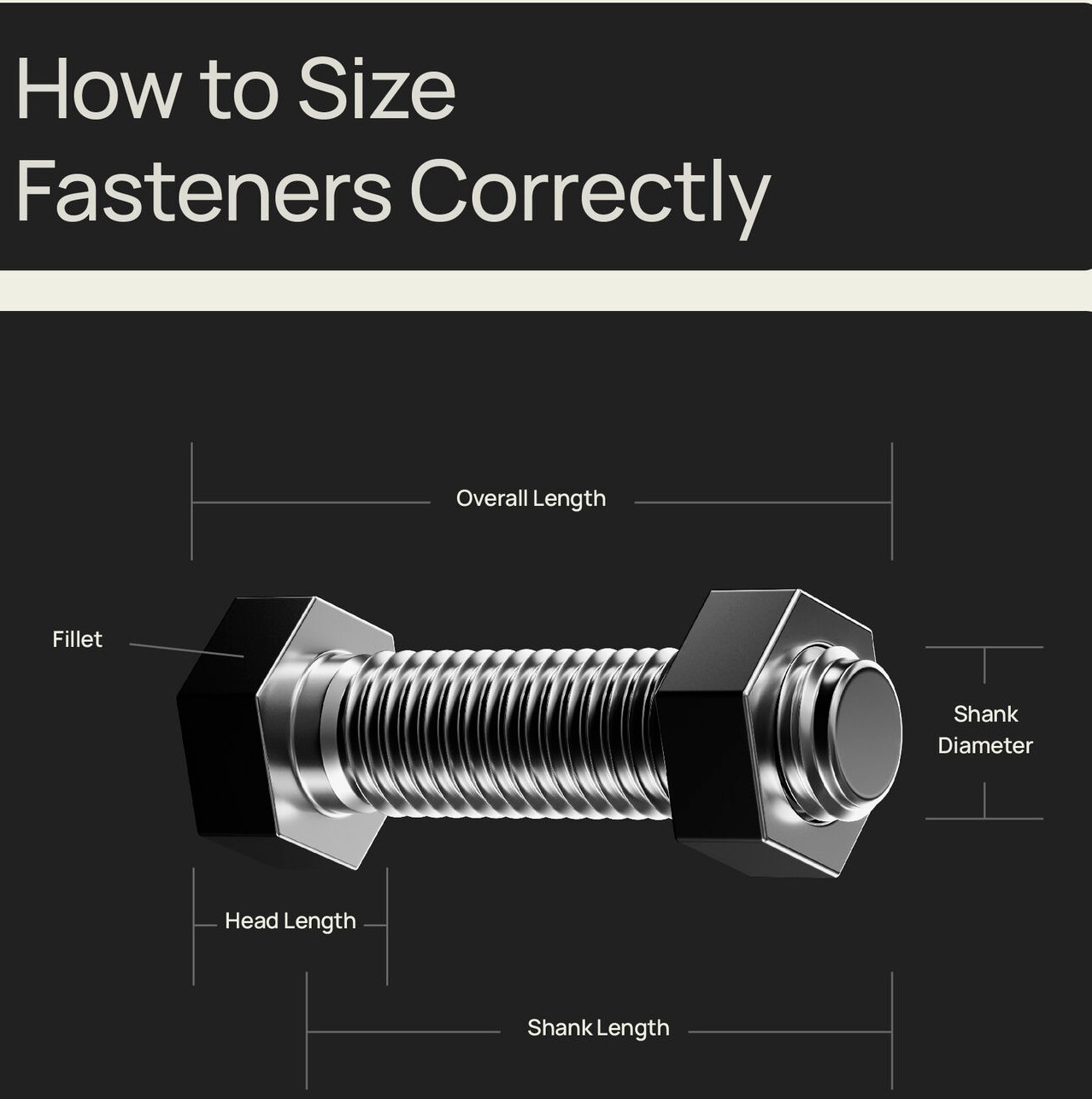
Often, fasteners have to endure extreme temperatures, vibration, pressure, and shock. This is why choosing the correct size 📐 and material for a fastener is critical. Ideally, you want to select a fastener that will create a clamping force that prevents separation and movement of the clamped parts once external forces are applied.
Unfortunately, often, people oversize the fastener, which can lead to a joint with a low clamp load, high risk for failure, and difficulty tightening. Follow these steps when selecting the appropriate size fastener:
1️⃣ Determine the maximum load that will be placed on the joint
2️⃣ Calculate the clamping force that will be put on the fastener.
3️⃣ Choose the minimum bolt diameter to support that clamp load, ensuring a tight fit.
4️⃣ Secure the bolt effectively, and decide which tightening method would be most appropriate.
If you follow these steps, you can be confident that you are choosing a fastener that is appropriately sized for your needs.
How do you measure fastener size?
While calculating clamping force may be easy in theory, you can use an online 🧮 calculator. You might need to measure the diameter of screws and bolts yourself. To find the major diameter of bolts (the most commonly-used one), you need to measure the distance from the outer thread on one side to the outer thread on the other. This is called the major diameter and will usually be the proper bolt size. You can also measure from the bottom cavity of the threads from one side to the other to find the minor diameter. Different types of screws are measured differently.
If you have a screw that’s flat on the bottom (this is the most common type), measure from the bottom of the head to the type. This also applies to hex and hex washer head screws and 🔩 bolts. Self-drilling screws, meanwhile, are measured from the bottom of the head to the end of the drill point tip. Flathead, countersunk screws and oval head screws are usually measured from the point to the tip (the full screw).
Do you not know where to start? We are here to help. So reach out 📟 to us, and we can answer your questions for everything, everywhere, every time.
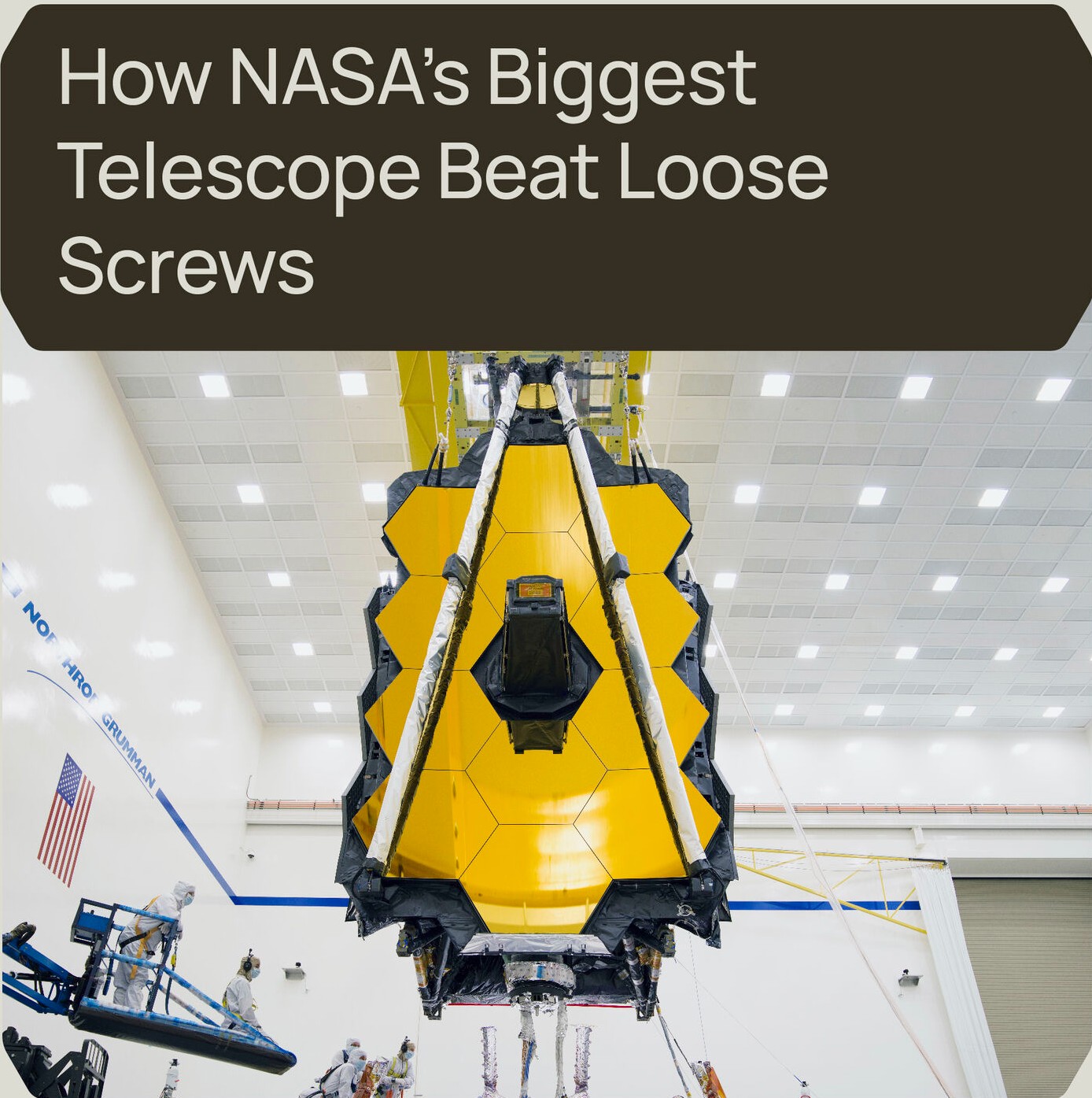
NASA’s James Webb Space Telescope 🛰 is a million miles away from Earth, observing the depths of the universe and traveling back in time to the time when stars began to form galaxies.
Its 18 gold-plated mirrors make up a system far more sensitive than that of the Hubble Space Telescope, which has succeeded as humanity’s most powerful scientific instrument for studying the formation of the universe and the distant worlds of our 🪐 galaxy.
But Webb, at a cost of about $10 billion, had one of the most problematic development schedules of any other space program, lasting more than two decades and costing several billion dollars more than the original budget—$800 million 💵 of that was partly due… to loose screws. And washers. And nuts.
Technicians discovered that screws fell out during a test-they put the solar shield through a vibration test, simulating vibrations twice as strong as expected during launch. When the test was over, technicians counted 20 loose screws out of the 1,000 needed to secure the thin material covering the solar shield.
These screws, half the thickness of a 🪙 dime, were designed to fit into a safety nut. But the tip of the screws could potentially scratch or tear the solar shield cover. Somewhere in the process, the technicians decided to add a washer to keep the screws from protruding too much. They didn’t realize, however, that the washer could prevent them from securing, and some screws were left with one less thread.
While these kinds of problems are not uncommon during testing for complex spacecraft, this error set the project back by a year and a half and cost hundreds of millions of dollars. Whether you’re building the next James Webb or not, Tsamouris 🧑🚀 is here to help you with everything, everywhere, every time.